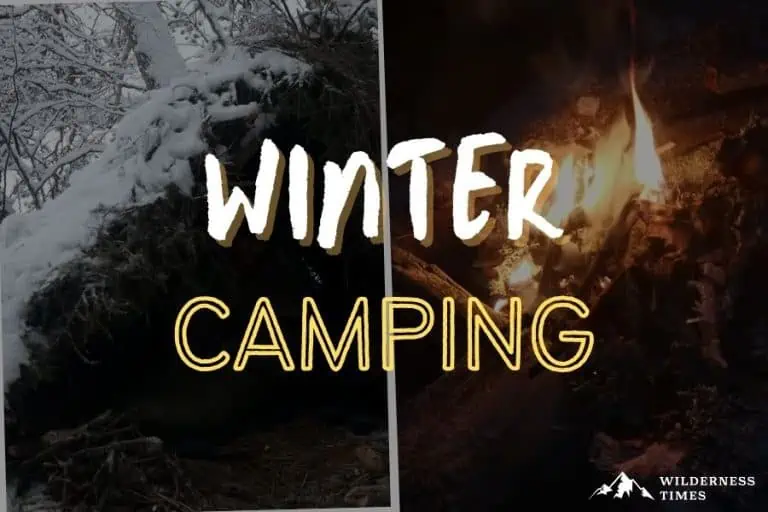Most people associate camping with summertime.
Which makes sense – the weather is nice, you don’t have to pack a lot of layers, and you can enjoy spending time in nature wearing nothing but a T-shirt and shorts.
But as soon as you mention winter camping, things start to change. Camping in severe winter conditions is only for the bravest and the most daring… or is it?
Not at all.
In fact, almost everyone can enjoy the pure sense of accomplishment that comes from pitching your tent in the snow. You just have to be smart about it.
Table of Contents
ToggleBenefits Of Winter Camping
While it does come with its own set of (sometimes harsh) challenges, camping during the winter can be a lot of fun… and it even comes with its own set of advantages.
Some of the benefits of winter camping include things like:
- Fewer crowds to spoil your time in nature
- Getting to use your camping gear more than just a few times a year
- Enjoying the snow-covered scenery with views like you’ve never seen before
- Drinking hot coffee/cocoa and bonding over a campfire with your family and friends
- Bonding with your kids while making a snowman
Now it’s not all sunshine and rainbows (figuratively speaking, of course). I won’t shy away from the truth – winter camping can be brutal if you’re not prepared. You could end up miserable at best, or in the hospital at worst.
Luckily, all winter camping problems can be solved with a little preparation. If you know what to expect and you prepare accordingly, you won’t have to worry at all.
12 Tips For Winter Camping Success
While there are a lot of things you need to know about camping during winter conditions, only a few will make or break your trip.
In fact, if you follow the following tips you can rest assured that you’ll be safe and warm during your winter camping adventure.
Without further ado, let’s dive in.
Check The Weather Forecast
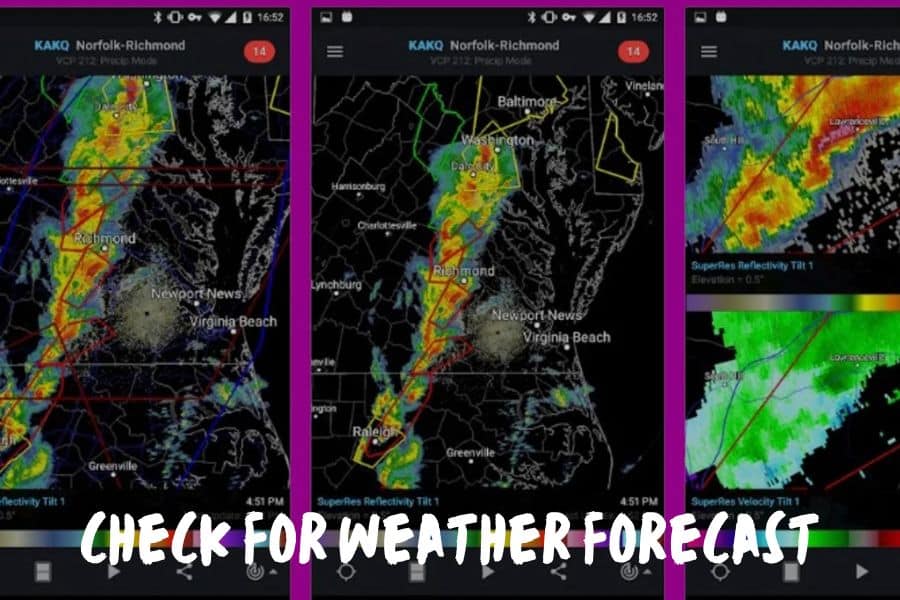
Yes, something so simple could be the key difference between freezing your butt off and enjoying a nice winter camping trip in comfort. Keep an eye out for any forecast mentioning possible storms or blizzards.
Check the weather forecasts frequently and don’t be afraid to reschedule your trip if the weather becomes too much for you to handle. This is especially true if this is your first winter camping trip – you want to ease into it, not jump headfirst into an avalanche.
Speaking of those… Make sure that the area you’re planning on camping in is not known for sudden avalanches. Double-check the park’s website often and consult with park rangers if you need more information. This article by Backcountry is a good introduction to avalanche safety for beginners.
Always Be Prepared
The first step to winter camping is preparation. While proper preparation is important for camping in any weather, it’s doubly important during winter since your margin for error is that much smaller.
Now, what does proper preparation even look like?
First, start with watching the weather forecast – we already covered that.
Next, choose your camping site carefully. If you’re a beginner, choose an easily accessible camping spot that is near the road. That way, if something happens, you can easily bail. The spot should also be near water so you don’t have to melt snow to get a drink of water.
Finally, you need to think about your clothing and your gear. We’ll cover those two in more detail later in this article, but basically you need to know how to layer clothing and how to choose proper winter camping gear.
Setting Up Camp
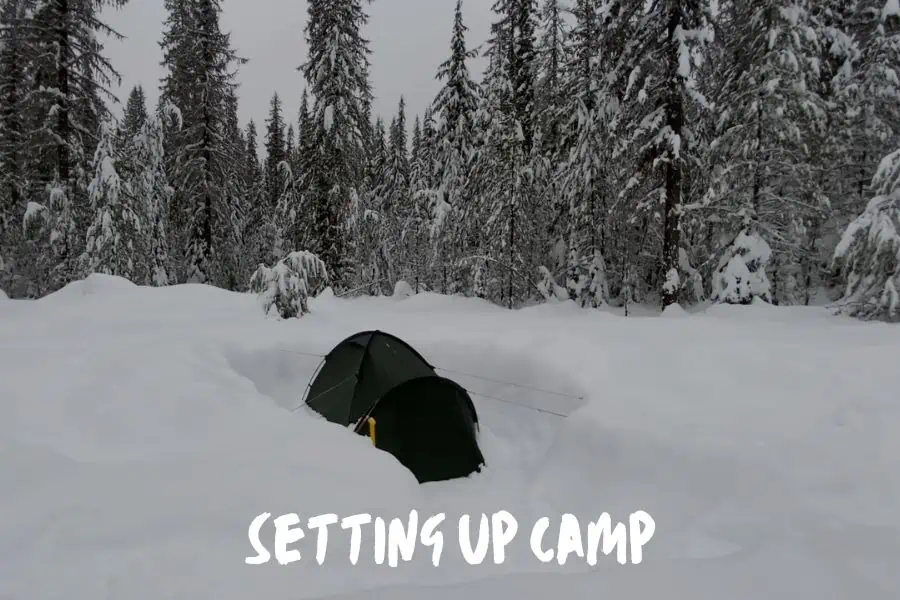
Setting up camp in the snow is slightly different than doing so on the grass during summer.
For starters, it’s critical you choose a good, safe location. You should choose a location where nothing can fall onto you (trees, snow, rocks, etc.) and where you’ll be safe from possible avalanches. The spot should be well protected from the wind, but still get plenty of sunshine during the day.
Pro tip: building a wall of snow around your tent can be a good way to protect yourself from the wind.
Next, compress the snow. You need to walk around in your snowshoes or skis and flatten the snow in the area you’ll pitch your tent. This ensures there’ll be no loose snow that’ll get melted away by your body heat, thus making it uncomfortable for you to sleep.
Finally, pitch your tent. I’ll get to it in a minute, but you should choose a fit-for-purpose winter tent that will insulate you properly from the cold. That way, you’ll be nice and toasty warm inside your tent. You can bury the tent stakes in the snow and then compress the snow around them so they’ll support the tent without any problems.
Dress For Success
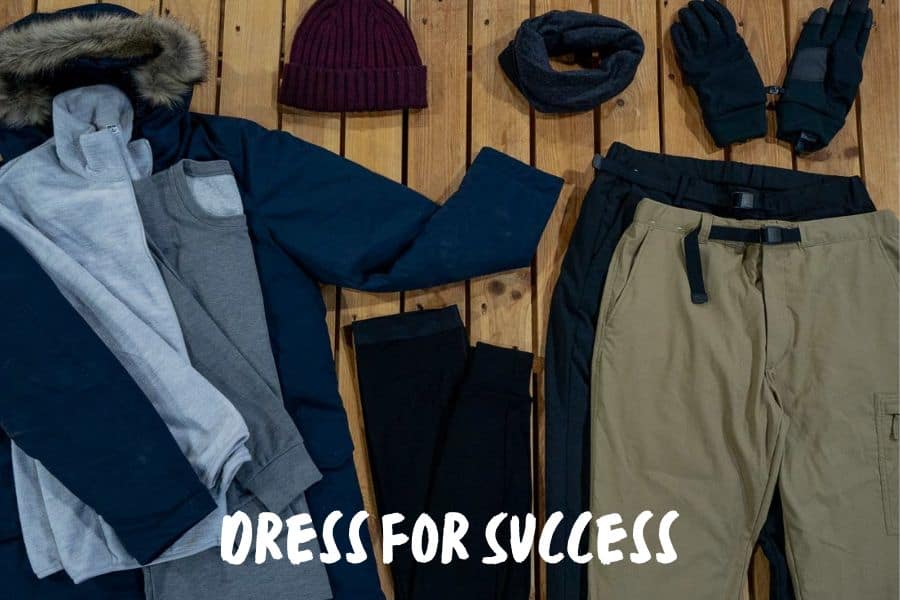
When it comes to your clothes, there’s only one word you need to know:
Layering.
Knowing how to properly layer your clothing is an invaluable skill to learn. Luckily, we wrote an entire article about it here, but I’ll give you the short version now.
In a nutshell, you have three different layers of clothing:
- The outer layer
- The middle layer
- The inner layer
The outer layer is responsible for protecting you from the outer elements – cold, obviously, but also rain, wind, and the like.
The purpose of the middle layer is to keep your body heat in. That’s why it’s often called the insulating layer.
And finally, the inner layer is tasked with absorbing sweat from your skin.
All three layers work together to keep you safe and warm even in the harshest of climates. When packing, you want to pack all three layers of clothing. That’s because you can easily remove one of them if it’s too hot or if you find yourself not needing it.
For that reason, I usually recommend over-layering. That’s because while layers can be removed in a jiffy, it’s impossible to add a layer if you haven’t packed it. You don’t want to be stuck in the snow in just a T-shirt – that’s where the problems start.
Bring Proper Winter Gear
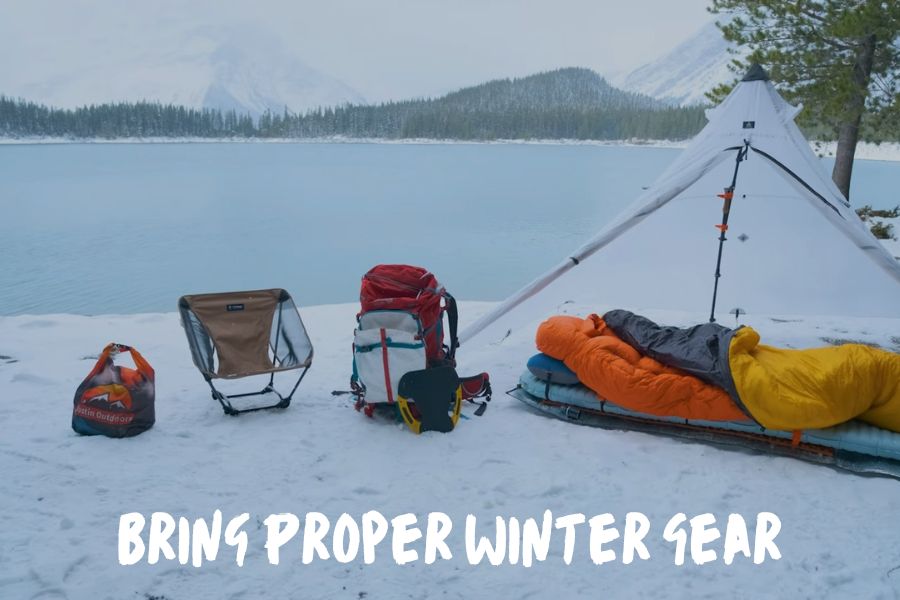
If you want to go winter camping, you’re going to need winter camping gear – there’s no way around that.
Your tent is no exception. Most tents made today are three-season tents. That means they can be used during spring, summer, and fall, but are not sturdy enough to be used in winter conditions.
To fully enjoy winter camping (and avoid freezing your butt off) you’re going to need a proper winter tent. FYI, they can also be called four-season tents. As it so happens, we’ve made a list of best winter tents for camping that are available today.
But often, the tent is not enough. Since the temperature drops (sometimes drastically) during the night, you’re also going to need a good winter sleeping bag. A good sleeping bag will keep your body heat insulated during your sleep and it’s probably the most important piece of your winter camping gear.
Of course, you also need stuff such as the 10 essentials, sturdy winter backpacks, sleeping pads (not an air mattress), kitchen gear, and so on, but the tent and the sleeping bag are the most important pieces for keeping you warm (and happy).
You can throw in a good tent heater in there if you don’t mind the extra weight.
Also See: Winter Camping Checklist (w/ Printable PDF)
Get That Campfire Going
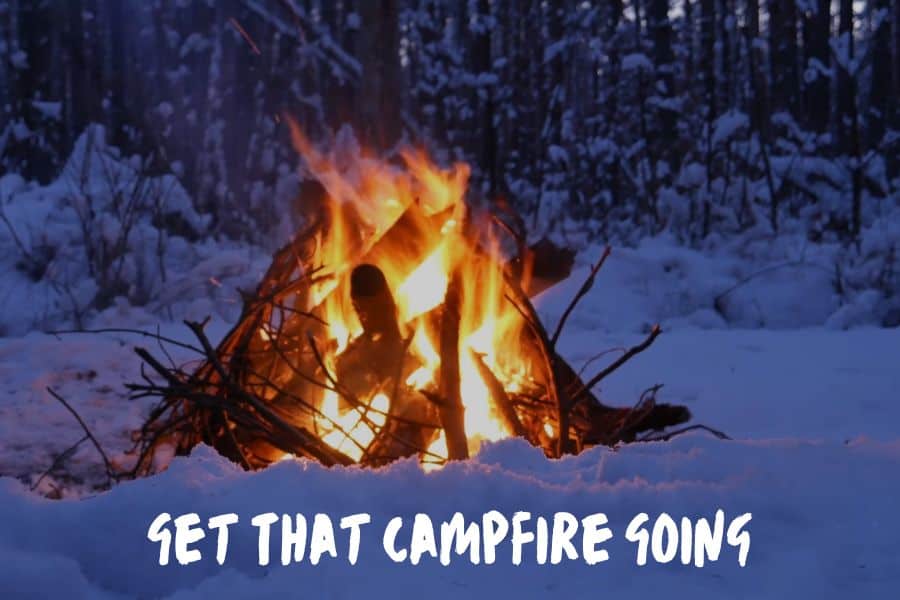
Ever since the cavemen first discovered fire, it has been a symbol of warmth and safety throughout history. Not only is it great for cooking food and warming up, but it also has a great psychological impact on our well-being.
Being huddled up around a campfire, drinking hot tea (or something stronger), and sharing stories is a great way to bond with your friends and forget about the cold weather.
The first thing you need to do is, obviously, start a campfire. While we do have an entire guide dedicated to explaining how to do just that, I’ll share the basics with you below.
The process can be broken down like this:
- First, research if campfires are even allowed at your campsite
- Next, gather the wood. Choose the wood carefully
- After that, lay your fire using one of the four popular methods we described in our article
- Then, light the fire. I suggest matches over a lighter
- Next, keep the fire going
- And finally, extinguish your fire
Sounds simple, right? Well, it is, but don’t confuse simple with easy. If you’re interested in more detail, be sure to check out the article I’ve linked to above.
Use Food And Drinks Strategically (Yes, Really)
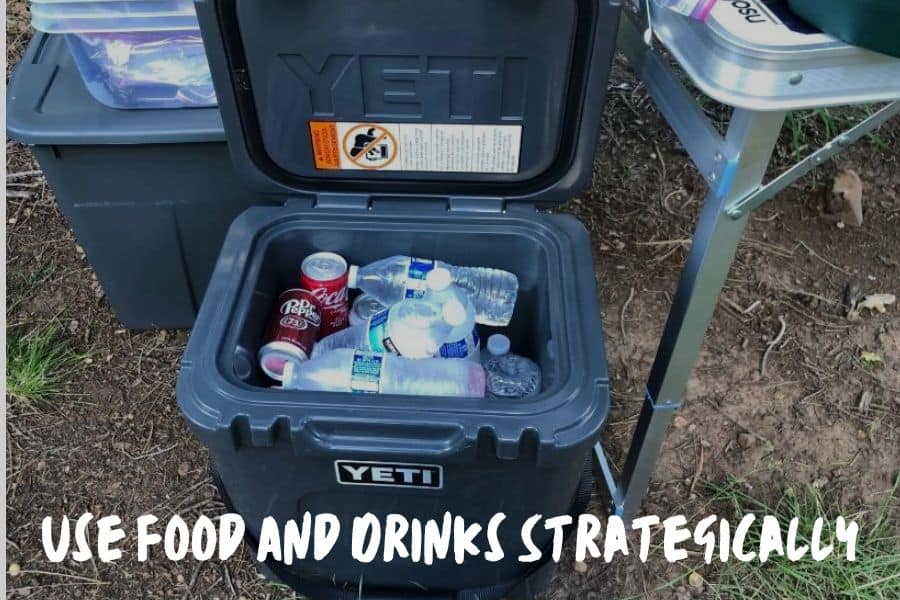
You might be thinking I’m joking with that headline.
I’m not.
You see, there are many ways to use both food and drinks in such a way that they’ll not only nourish you; it’ll also keep you warm during those cold winter days (and nights).
For example, just by digesting food your body generates heat. Therefore, it’s a good idea to eat something, even just a snack, before going to bed. Likewise, if you wake up in the middle of the night and you feel cold, have a quick bite and you should soon feel warmer.
Another cool trick you can use involves a bottle of hot water. It’s best to do this just before going to bed. It works like this: boil some water and pour it into your water bottle (make sure it’s hard-plastic, and not metal). Then, bring that bottle with you inside your sleeping bag. Keep it close to your body, or between your legs and voila – you have your own personal body heater.
On Preventing & Treating Injuries
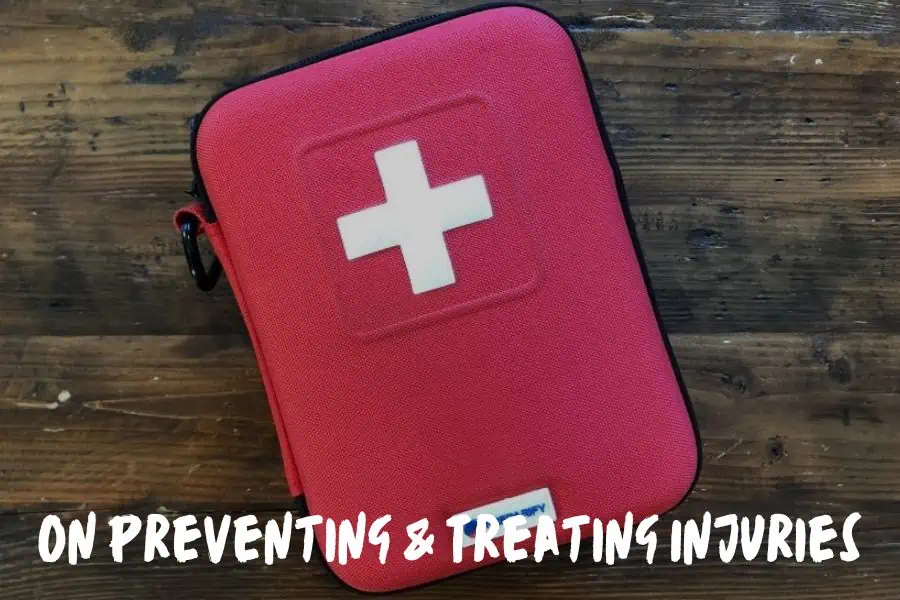
Now, nobody likes to think about injuries. After all, nobody plans on getting hurt, right?
However, it’s a fact of life that injuries do happen and so it’s important to learn how to prevent them, and ultimately, how to deal with them.
A first aid kit should be a mandatory item for any serious winter trip. It should include things like band-aids, gauze pads, and ibuprofen – we’ve even made a quick checklist you can use. Obviously, you need to know how to use it, so I suggest you take a free first aid class that’ll teach you how to deal with basic injuries.
When it comes to common winter camping problems, the most common ones are frostbite and hypothermia. With those two, prevention is the best cure. Make sure you stay warm by layering your clothing and using the proper gear – that’ll eliminate a lot of problems most campers face.
Additional Tips
In this section, I’d like to share a collection of quick tips that don’t fit anywhere else. For example:
- Be sure to have a quick workout before going to sleep. That will warm you up and it’ll provide more body heat that’ll remain inside your sleeping bag. You don’t have to get crazy, though – just jumping around or chasing your kids around should do the trick.
- Keep your boots inside of the tent. This will make them a bit warmer than if you’ve left them outside, and thus more pleasant to put on in the morning. Trust me – your toes will thank you for that!
- Gotta go? Then go. Your body uses up more heat if you hold your pee, so anytime you feel the call of nature I suggest you take it. Now, since nobody likes getting up in the middle of the night, I suggest you have a designated pee bottle you can use. Just make sure you don’t mistake it for a water bottle!
- If you have a lot of electronic devices (and who doesn’t these days?) try to use lithium batteries. They perform a lot better than alkaline batteries in cold conditions, weigh a lot less, and last a lot longer.
- If you plan on hiking in the snow, we’ve prepared an entire article for you, but be sure to make sure that you have the right footware and equipment. Most of all, hike during daylight hours, and make sure to bring snacks and plenty of water to stay hydrated.
Conclusion
Whew, that was a lot to write. And I bet it’s a lot to take in, too.
While winter camping might require more thought and preparation than regular camping, it is without a doubt worth it. That feeling you get when you wake up and step outside on freshly fallen snow is one of life’s greatest experiences (for me, at least).
Yes, you do have to pack a bit more. And yes, it might require some additional clothing and specialized gear. But that’s a small price to pay for the sheer adventure and excitement only camping in the winter can bring.


